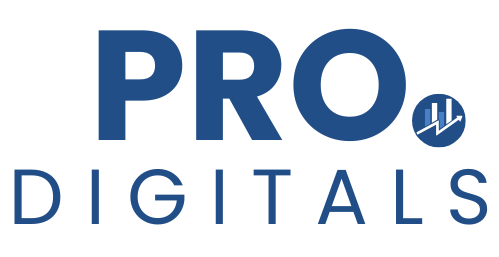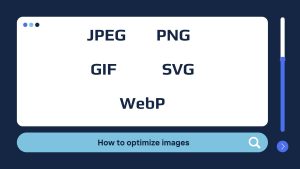Search engines are relentless digital archivists—scouring, categorizing, and cataloging the web so users can find exactly what they need. But if your pages aren’t crawlable or indexable, they might as well be locked in a vault. No matter how brilliant your content is, invisibility in search results is a death sentence for organic traffic.
Understanding Crawlability and Indexability
What Is Crawlability?
Crawlability determines how effortlessly search engine bots (like Googlebot) traverse and access your website’s pages. Imagine your site as a library—if the shelves are disorganized, the librarian (or bot) will struggle to locate every book.
Key factors influencing crawlability:
- Site architecture (logical hierarchy vs. chaotic sprawl)
- Internal linking (clear pathways for bots to follow)
- Server response times (slow sites frustrate bots and users alike)
A bot’s patience isn’t infinite. If your site is a labyrinth of broken links and redirects, critical pages may never be discovered.
What Is Indexability?
Indexability defines whether a crawled page earns a spot in a search engine’s database. Even if a bot accesses your page, it might vanish into the digital void due to:
noindextags (intentional or accidental)- Duplicate content (forcing bots to pick a “canonical” version)
- Thin or spammy content (low-quality pages get discarded)
Think of it like a bookstore: crawlability is whether the clerk can find a book, while indexability is whether they stock it.
Why Crawlability and Indexability Are Non-Negotiable
SEO begins with visibility. If search engines can’t crawl or index your pages, your content is shouting into a void. Common culprits sabotaging both:
- 404 errors (broken links = dead ends for bots)
- JavaScript-heavy pages (poorly rendered content may go unnoticed)
- Orphaned pages (no internal links pointing to them)
- Blocked resources (misconfigured
robots.txtor.htaccessfiles)
Ever stumbled upon a website where half the links lead to errors? That’s a crawlability disaster—and Google won’t reward dysfunction.
How Search Engines Crawl and Index Pages
The Crawling Process: How Bots Navigate Your Site
Bots begin with a seed list (often your homepage) and follow links like breadcrumbs. Their crawl priority depends on:
- Internal Links
Pages with more internal links signal importance. A “Services” page linked from the homepage, footer, and blog? High priority. - XML Sitemaps
A well-structured sitemap acts like a VIP invitation for bots. - Page Authority
Trusted domains (e.g.,.eduor established brands) get crawled more frequently.
Pro Tip: If your “Contact Us” page is buried five clicks deep, bots might abandon the hunt.
The Indexing Process: Why Crawling ≠ Ranking
After crawling, bots evaluate whether to index a page. Key considerations:
- Content Uniqueness
Duplicate or scraped content? Bots may ignore it. - Meta Directives
noindextags ordisallowrules inrobots.txtcan exile pages from search results. - Page Speed
Slow-loading pages frustrate users—and bots deprioritize them.
Indexing is merely step one. Ranking demands relevance, backlinks, and user engagement.
How to Improve Crawlability: A Tactical Guide
1. Eradicate Broken Links
Dead links are digital quicksand. Tools to identify them:
- Google Search Console (under “Coverage” reports)
- Screaming Frog (crawls your site like a bot)
- Ahrefs (detects broken backlinks too)
Fix 404s by redirecting them to relevant pages or removing them entirely.
2. Streamline Site Architecture
A shallow, intuitive hierarchy is bot-friendly. Ideal structure:
Homepage → Category Pages → Subcategory Pages → Product/Article
Avoid nesting pages deeper than three clicks from the homepage.
3. Deploy an XML Sitemap
An XML sitemap is a cheat sheet for bots. Best practices:
- Include only canonical URLs (no duplicates).
- Update it dynamically (for CMS platforms like WordPress).
- Submit via Google Search Console for faster indexing.
For more information on how to create sitemap, read this article.
4. Strengthen Internal Linking
Internal links distribute authority and guide bots. Examples:
- Link cornerstone content from high-traffic pages.
- Use descriptive anchor text (e.g., “Learn about SEO best practices” vs. “Click here”).
5. Audit robots.txt
A single misconfigured line can block critical pages. Verify:
- Essential pages (homepage, blog, product pages) aren’t disallowed.
- CSS/JS files are crawlable (necessary for rendering).
How to Boost Indexability: Advanced Strategies
1. Banish noindex Tags (Unless Necessary)
Common noindex pitfalls:
- CMS templates accidentally applying the tag.
- Staging sites leaking into production.
Use tools like SEO Meta in 1 Click (Chrome extension) to spot rogue tags.
2. Canonicalize Duplicate Content
Duplicate content confuses bots. Solutions:
- Set canonical tags to indicate the “master” version.
- Use 301 redirects for deprecated URLs.
3. Turbocharge Page Speed
Google’s PageSpeed Insights reveals bottlenecks. Quick fixes:
- Compress images (use WebP format).
- Enable lazy loading for off-screen media.
- Leverage browser caching.
4. Monitor Index Coverage
Google Search Console’s Index Coverage Report flags:
- Pages blocked by
robots.txt. - Soft 404s (pages returning 200 status but little content).
5. Publish High-Value Content
Bots prioritize pages that answer user intent. Ask:
- Is this content deeper than a competitor’s?
- Does it include multimedia (videos, infographics)?
- Are keywords naturally integrated?
Debunking Crawlability and Indexability Myths
Myth 1: “More Pages = Higher Rankings”
Reality: Google favors quality over quantity. A 10,000-page site with fluff won’t outrank a 100-page authority site.
Myth 2: “Bots Will Eventually Find Everything”
Reality: Crawl budgets are finite. Bloated sites risk having key pages ignored.
Myth 3: “Indexed Pages Always Rank”
Reality: Indexing is a prerequisite—not a ranking guarantee. Competition, backlinks, and UX matter more.
Case Study: The Vanishing Blog
A SaaS company noticed their blog traffic plummeting. Diagnosis? Their robots.txt file accidentally disallowed /blog/.
After unblocking it:
- 200% increase in organic traffic within a month.
- 15 previously ignored guides began ranking on page one.
Moral: Technical SEO isn’t glamorous—but it’s foundational.
Essential Tools for Crawlability and Indexability
| Tool | Purpose |
|---|---|
| Google Search Console | Monitor indexing status, crawl errors, and security issues. |
| Screaming Frog | Audit site structure, broken links, and metadata. |
| Ahrefs/SEMrush | Analyze competitors’ crawlability gaps. |
| PageSpeed Insights | Optimize load times for better crawl efficiency. |
The Bottom Line
Crawlability and indexability are the unsung heroes of SEO. Without them, even Pulitzer-worthy content is invisible. Regular audits, clean code, and strategic internal linking keep your site bot-friendly—and users happy.
Want to dominate search results? Start by ensuring Google can find you. Because in SEO, visibility isn’t everything—it’s the only thing. 🚀

